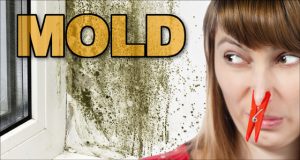Health Risks Caused by the Fungus Among Us
Mold spores are all around us, even when we do not see them. They stealthily creep into homes and businesses, spreading their destruction and creating health problems— especially for anyone already experiencing breathing problems or a compromised immune system.
Two Things that Promote the Spread of Mold
 Mold spores need only two things to flourish— an organic material to feed on and moisture.
Mold spores need only two things to flourish— an organic material to feed on and moisture.
Organic building materials like wood and sheetrock create the ideal environment for mold growth. Invading spores need only a little moisture to start multiplying like those tribbles on Star Trek— only these cruddy creatures are neither cuddly nor cute.
It takes very little moisture to promote mold: poor ventilation in a bathroom, a small leak in the roof or in a pipe, condensation on the windows, or even high humidity may lead to mold growth. And when disaster strikes and your home or business floods, mold is inevitable.
What Is That Smell?
Your nose may be the first to pick up the scent of mold spores invading your space. Suddenly you catch a whiff of a musty smell that makes your nose wrinkle up in distaste.
Next thing you know, there is an odd-looking stain in the corner.
Ignore these signs at your own peril! Mold will spread, feeding on wood, paper, natural fabrics, and insulation— destroying every organic material it finds. Left unchecked, mold even inflicts structural damage to wood-framed buildings.
And be advised that most insurance policies do not cover mold damage.
Health Implications of Mold
Mold wreaks havoc on your health.
People with allergies, asthma, COPD, or other respiratory conditions suffer greatest when mold spores invade. Mold increases complications for anyone with a compromised immune system. The children and the elderly are particularly vulnerable to health risks from mold and mildew.
Ousting Mold Invaders
Mold in buildings cannot simply be killed; it has to be carefully removed from the premises.
Wood buildings exposed to flood damage from natural disasters or burst water pipes produce rapid mold growth. The Centers for Disease Control (CDC) offers excellent advice on mold removal in its Guide to Mold Cleanup After Disasters.
In extreme cases, building owners may need a professional mold remediation service to defeat the mold problem.
Creating a Mold-Free Zone with a Steel Building
Stop a mold invasion before it starts! How? By building with mold-resistant steel.
Pre-engineered steel buildings help prevent mold in three ways:
- Steel is inorganic. Mold cannot grow without an organic material to feast on.
- Steel does not soak up moisture as lumber does. Without moisture, mold cannot multiply. In addition, RHINO Steel Buildings includes many special waterproofing features to thwart any leaks or condensation problems that might give mold spores a foothold.
- RHINO steel buildings create an especially tight building envelope, further reducing the chances for high levels of moisture to enter the structure.
The inorganic properties of steel make metal buildings termite-resistant, too. No termite or mold spore can feed on steel.
The high-recycled content of steel also makes it an ideal green building material.
Need to know more about mold-resistant metal buildings? Call RHINO now at 940.383.9566. Let our metal building specialists explain all the advantages of building with strong, durable, environmentally friendly steel.
